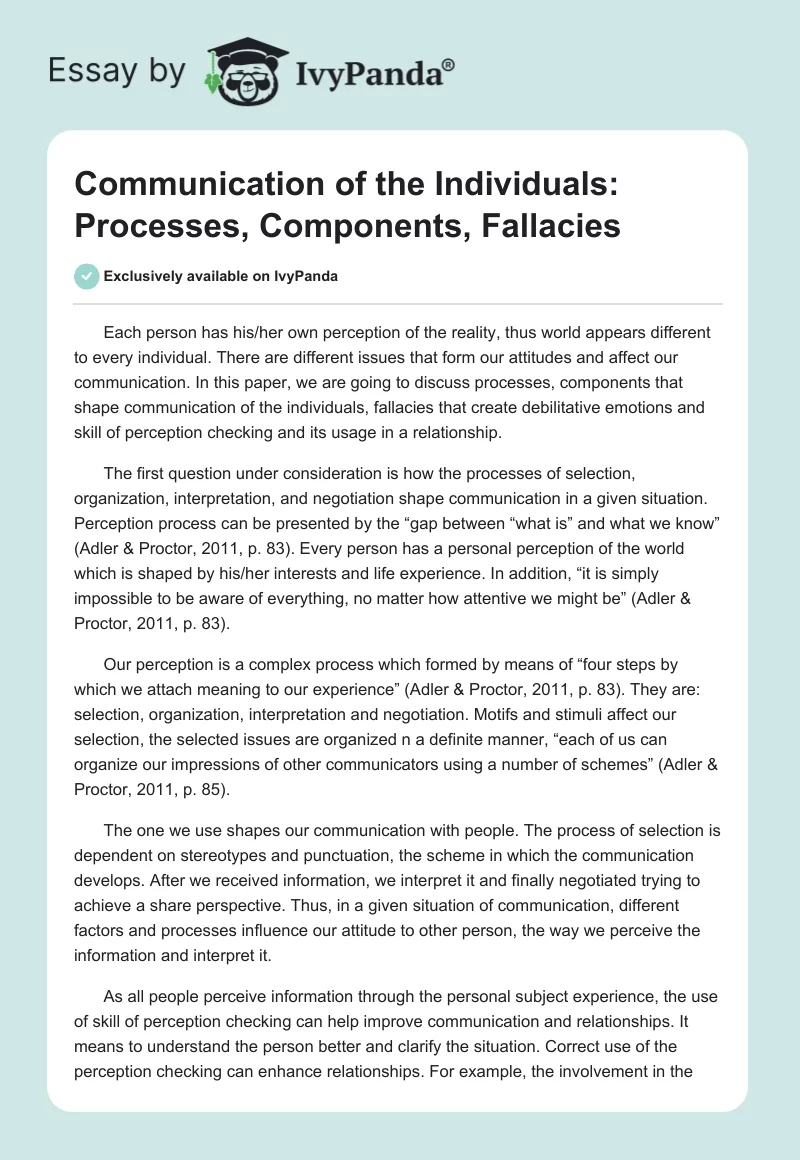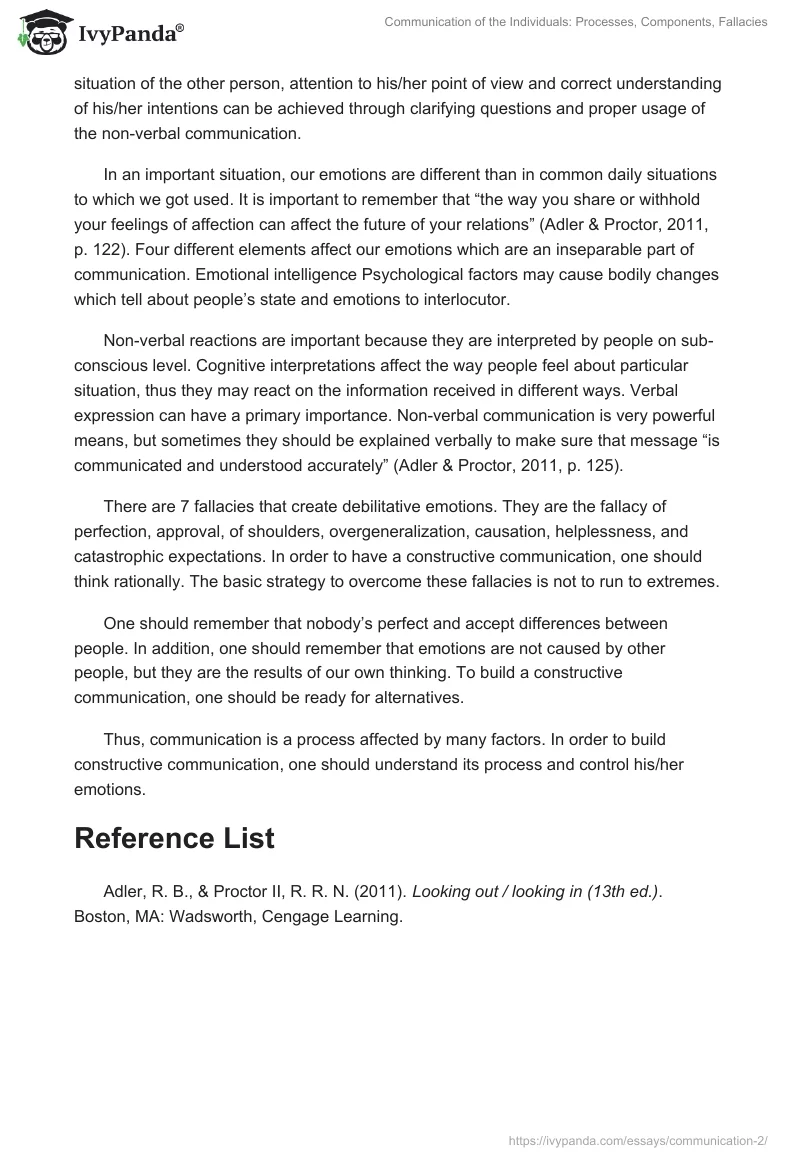Each person has his/her own perception of the reality, thus world appears different to every individual. There are different issues that form our attitudes and affect our communication. In this paper, we are going to discuss processes, components that shape communication of the individuals, fallacies that create debilitative emotions and skill of perception checking and its usage in a relationship.
The first question under consideration is how the processes of selection, organization, interpretation, and negotiation shape communication in a given situation. Perception process can be presented by the “gap between “what is” and what we know” (Adler & Proctor, 2011, p. 83). Every person has a personal perception of the world which is shaped by his/her interests and life experience. In addition, “it is simply impossible to be aware of everything, no matter how attentive we might be” (Adler & Proctor, 2011, p. 83).
Our perception is a complex process which formed by means of “four steps by which we attach meaning to our experience” (Adler & Proctor, 2011, p. 83). They are: selection, organization, interpretation and negotiation. Motifs and stimuli affect our selection, the selected issues are organized n a definite manner, “each of us can organize our impressions of other communicators using a number of schemes” (Adler & Proctor, 2011, p. 85).
The one we use shapes our communication with people. The process of selection is dependent on stereotypes and punctuation, the scheme in which the communication develops. After we received information, we interpret it and finally negotiated trying to achieve a share perspective. Thus, in a given situation of communication, different factors and processes influence our attitude to other person, the way we perceive the information and interpret it.
As all people perceive information through the personal subject experience, the use of skill of perception checking can help improve communication and relationships. It means to understand the person better and clarify the situation. Correct use of the perception checking can enhance relationships. For example, the involvement in the situation of the other person, attention to his/her point of view and correct understanding of his/her intentions can be achieved through clarifying questions and proper usage of the non-verbal communication.
In an important situation, our emotions are different than in common daily situations to which we got used. It is important to remember that “the way you share or withhold your feelings of affection can affect the future of your relations” (Adler & Proctor, 2011, p. 122). Four different elements affect our emotions which are an inseparable part of communication. Emotional intelligence Psychological factors may cause bodily changes which tell about people’s state and emotions to interlocutor.
Non-verbal reactions are important because they are interpreted by people on sub-conscious level. Cognitive interpretations affect the way people feel about particular situation, thus they may react on the information received in different ways. Verbal expression can have a primary importance. Non-verbal communication is very powerful means, but sometimes they should be explained verbally to make sure that message “is communicated and understood accurately” (Adler & Proctor, 2011, p. 125).
There are 7 fallacies that create debilitative emotions. They are the fallacy of perfection, approval, of shoulders, overgeneralization, causation, helplessness, and catastrophic expectations. In order to have a constructive communication, one should think rationally. The basic strategy to overcome these fallacies is not to run to extremes.
One should remember that nobody’s perfect and accept differences between people. In addition, one should remember that emotions are not caused by other people, but they are the results of our own thinking. To build a constructive communication, one should be ready for alternatives.
Thus, communication is a process affected by many factors. In order to build constructive communication, one should understand its process and control his/her emotions.
Reference List
Adler, R. B., & Proctor II, R. R. N. (2011). Looking out / looking in (13th ed.). Boston, MA: Wadsworth, Cengage Learning.


